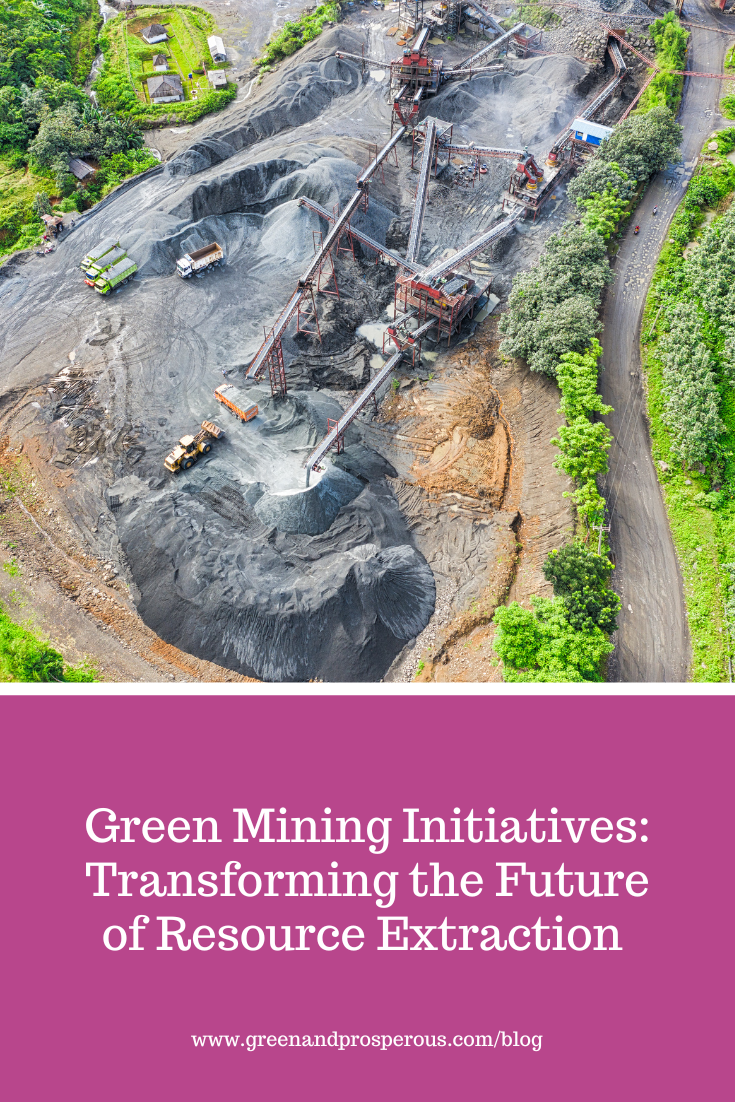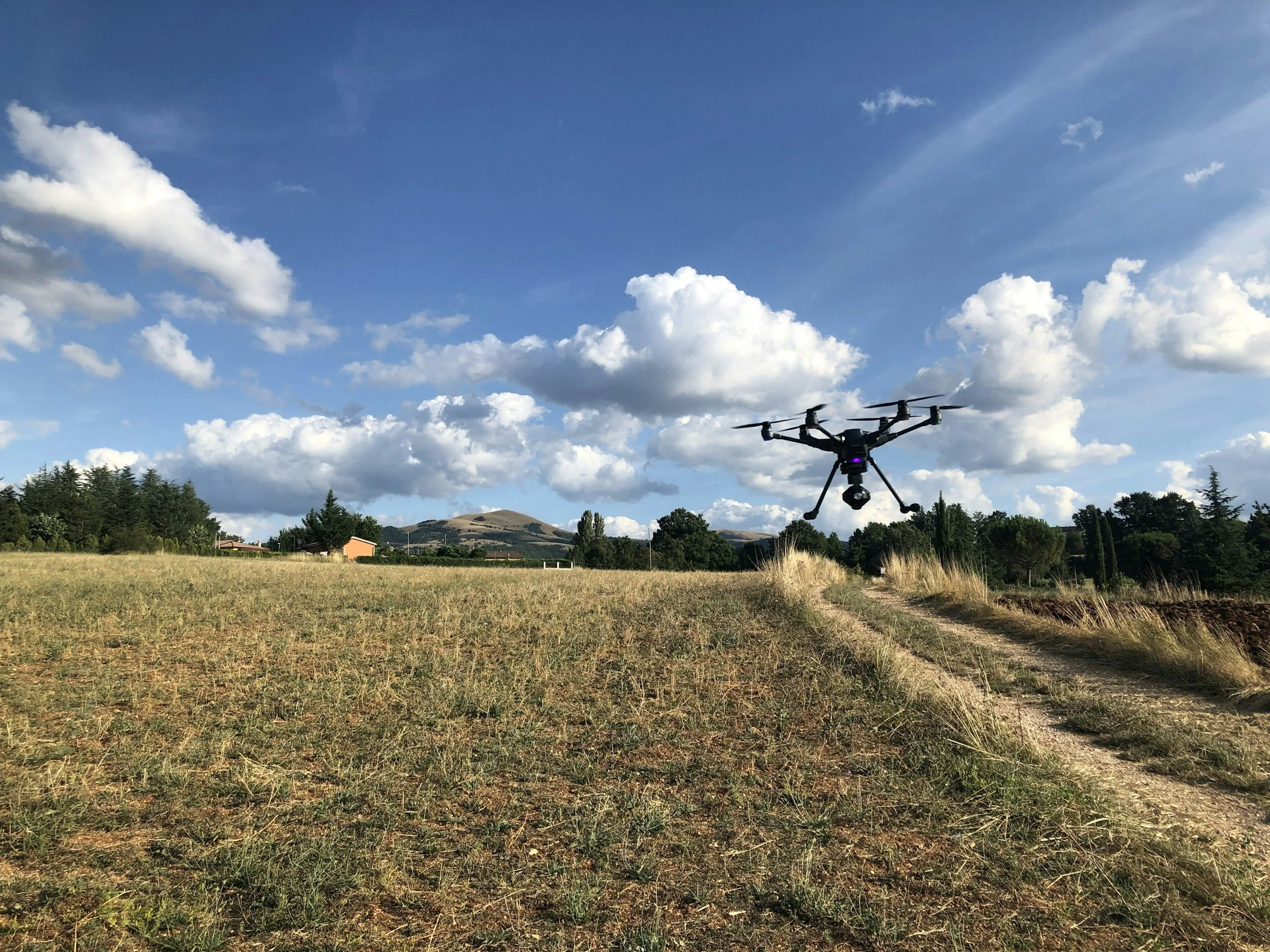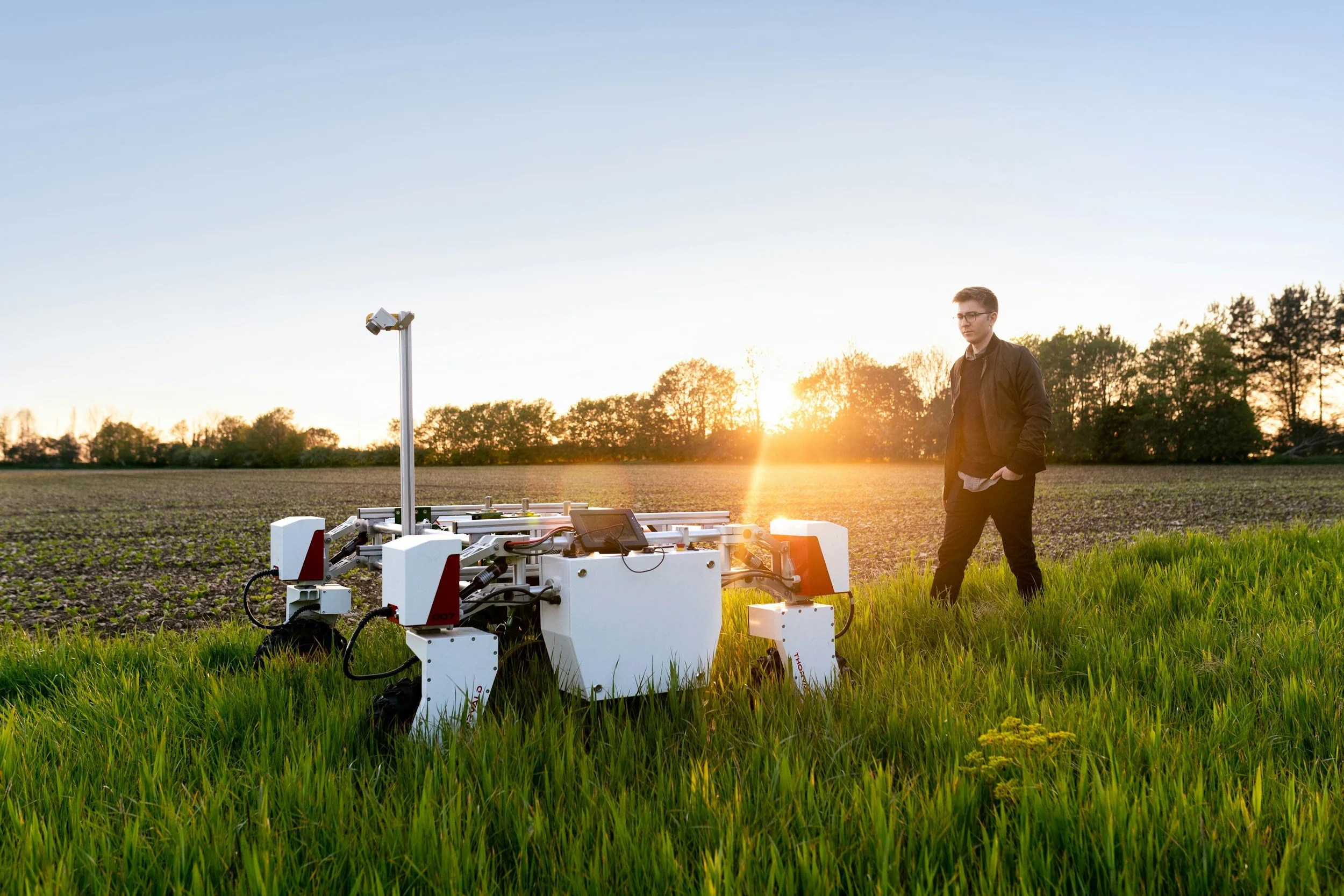Green Mining Initiatives: Transforming the Future of Resource Extraction
/Green mining is an emerging approach aimed at reducing the environmental impact of resource extraction while ensuring long-term sustainability. Traditional mining practices have historically contributed to land degradation, water contamination, and excessive greenhouse gas emissions. As global demand for minerals rises, the industry faces increasing pressure to adopt eco-friendly practices. Green mining initiatives seek to minimize ecological harm through innovative technologies, efficient resource use, and regulatory compliance.
What is Green Mining?
Green mining refers to sustainable mining practices that mitigate environmental damage while improving operational efficiency. It encompasses technological advancements, reduced energy consumption, and responsible waste management. Unlike conventional mining, which often prioritizes output over ecological considerations, green mining integrates renewable energy sources, water conservation techniques, and emissions reduction strategies.
Why is Sustainable Mining Important?
The transition to green mining is crucial for environmental and economic reasons:
Environmental Impact: Traditional mining is responsible for nearly 10% of global carbon emissions, extensive deforestation, and severe water pollution.
Economic Benefits: Energy-efficient mining reduces costs, enhances resource recovery, and creates new investment opportunities.
Regulatory Compliance: Governments worldwide are enforcing stricter environmental laws, making sustainability essential for long-term profitability.
Public Perception: Consumers and investors are increasingly favoring companies that prioritize environmental, social, and governance (ESG) factors.
What Are the Key Green Mining Technologies?
Green mining technologies are revolutionizing the industry by making mineral extraction processes cleaner and more efficient.
Renewable Energy in Mining
Mining operations are integrating solar, wind, and hydroelectric power to lower their carbon footprint. Companies such as Rio Tinto have implemented large-scale solar farms to power their facilities, reducing reliance on fossil fuels.
Autonomous and Electric Mining Equipment
Autonomous electric vehicles and battery-powered machinery are replacing diesel-powered equipment, reducing emissions and fuel costs. These technologies also enhance worker safety by minimizing exposure to hazardous environments.
Water Recycling and Treatment in Mining
Water scarcity is a critical issue in mining regions. Advanced filtration systems and closed-loop water recycling technologies help minimize water consumption and prevent contamination of local water sources.
Bioleaching and Bioremediation
Microorganisms are being used to extract metals from ores without toxic chemicals, significantly reducing environmental damage. While bioleaching is a slower process than traditional methods, it is more sustainable and cost-effective over time.
Dry Processing and Dust Suppression Techniques
Traditional ore processing requires large amounts of water. Dry processing eliminates water use, reducing environmental impact. Additionally, dust suppression systems prevent airborne pollution, improving air quality around mining sites.
Carbon Capture and Storage in Mining
Mining companies are exploring carbon sequestration to offset emissions. Initiatives like direct air capture (DAC) and underground carbon storage are becoming more prevalent in mining operations.
How Are Governments and Organizations Supporting Green Mining?
Governments and global organizations are playing a pivotal role in promoting green mining practices.
Regulations and Compliance in Green Mining
Stricter environmental regulations mandate responsible mining practices. Organizations such as the United Nations and the World Bank advocate for sustainability through policy enforcement and environmental impact assessments.
Financial Incentives for Sustainable Mining
Governments offer tax breaks, subsidies, and grants to encourage companies to adopt eco-friendly mining techniques. Public-private partnerships further accelerate the transition to green mining.
How Can Mining Companies Transition to Sustainable Practices?
Adopting green mining requires a structured approach:
Assessing Environmental Impact
Conducting detailed environmental impact assessments (EIAs) helps mining companies identify areas where sustainability improvements are needed. Regular monitoring and transparent reporting ensure accountability and compliance with environmental regulations.
Implementing Energy-Efficient Mining Practices
Optimizing energy use through smart grids, automation, and renewable energy integration significantly reduces operational costs and emissions. Investing in hybrid or fully electric mining fleets further decreases reliance on fossil fuels and improves overall efficiency.
Sustainable Waste Management in Mining
Innovative recycling and repurposing of mining waste contribute to a circular economy, reducing the need for new raw materials. Technologies such as dry stacking for tailings management help minimize water consumption and prevent toxic spills.
Improving Community Engagement and Social Responsibility
Building strong relationships with local communities through ethical labor practices and infrastructure development enhances social sustainability. Engaging in fair profit-sharing models and supporting local businesses can create long-term economic benefits for affected regions.
What Are the Economic Benefits of Green Mining?
Green mining offers long-term financial advantages:
Increased Efficiency and Reduced Costs
Automation and clean energy lead to cost savings and improved resource efficiency, ensuring sustainable profitability. Advanced technologies such as AI-driven ore sorting and water recycling further optimize resource use, reducing waste. Additionally, renewable energy sources like solar and wind power lower operational expenses by minimizing reliance on fossil fuels.
Access to Sustainable Investment Funds
Investors are increasingly funding companies that align with ESG principles, providing financial incentives for sustainability efforts. Mining firms that prioritize environmental responsibility can tap into green bonds and sustainability-linked loans, offering lower interest rates and favorable financing terms. This growing investor preference for ethical and eco-friendly businesses enhances long-term capital stability.
Future-Proofing Against Stricter Regulations
Proactively adopting green mining practices helps companies avoid penalties and maintain long-term competitiveness. As governments worldwide tighten environmental standards, early adoption of sustainable methods ensures regulatory compliance and smooth operational continuity. Furthermore, a proactive green strategy improves corporate reputation, fostering stronger relationships with policymakers and stakeholders.
What Are the Challenges in Implementing Green Mining?
Despite its benefits, green mining faces several challenges:
High Initial Costs of Sustainable Technologies
Investing in renewable energy and electric equipment requires significant capital. However, financial support programs can offset these costs. Governments and international organizations offer subsidies, tax incentives, and grants to encourage green mining adoption. Additionally, long-term operational savings from reduced energy consumption and lower waste disposal costs can help justify the upfront investment.
Technological Limitations and Feasibility
Some sustainable technologies, such as bioleaching, are still in the early stages of development, requiring further research and investment. Limited scalability and uncertain efficiency in different mining environments make widespread adoption challenging. Collaboration between mining companies, technology developers, and academic institutions is essential to accelerate innovation and improve practical applications.
Resistance to Change in the Industry
Many mining companies hesitate to adopt green initiatives due to entrenched traditional practices. Industry leaders must promote awareness and demonstrate the financial benefits of sustainability. Resistance often stems from concerns about production downtime and uncertainty over returns on investment, making clear case studies and pilot projects crucial for showcasing success. Additionally, regulatory pressure and growing consumer demand for ethically sourced materials can drive reluctant companies toward greener practices.
What Are Some Real-World Examples of Green Mining Initiatives?
Leading mining companies have successfully integrated green technologies into their operations:
Rio Tinto’s Sustainability Initiatives
Rio Tinto has invested in solar and wind energy projects, reducing its reliance on fossil fuels. The company has also implemented autonomous electric haul trucks and battery-powered drilling equipment to further cut emissions. Additionally, Rio Tinto is pioneering low-carbon aluminum production through its ELYSIS technology, which eliminates direct greenhouse gas emissions from the smelting process.
BHP’s Commitment to Carbon Neutrality
BHP aims to achieve net-zero emissions by incorporating hydrogen-powered vehicles and expanding its use of renewable energy. The company is also developing carbon capture and storage (CCS) solutions to mitigate emissions from its operations. Furthermore, BHP has committed to working with suppliers and customers to reduce carbon footprints across its entire value chain, emphasizing a holistic approach to sustainability.
Anglo American’s FutureSmart Mining
Through digital innovation and predictive maintenance, Anglo-American optimizes energy consumption and minimizes waste. The company’s eco-friendly approach includes the use of precision mining techniques, which maximize resource efficiency while reducing environmental disruption. Anglo-American is also deploying waterless ore processing methods to decrease water usage and improve sustainability in arid regions.
Vale’s Water Management Strategies
Vale has implemented advanced water treatment facilities to reduce contamination and promote water conservation. The company has adopted dry stacking technology, which eliminates the need for wet tailings dams and significantly lowers the risk of water pollution. Additionally, Vale is investing in reforestation projects and biodiversity conservation to restore ecosystems affected by mining activities.
What Are the Future Trends in Green Mining?
The future of mining will be shaped by technological advancements and alternative resource extraction methods:
AI and IoT in Sustainable Mining
Artificial intelligence and smart sensors will enhance efficiency and resource management. Predictive analytics will enable real-time monitoring of machinery and environmental conditions, reducing downtime and optimizing energy use. Additionally, AI-driven automation will improve ore sorting and waste reduction, leading to higher yields with lower environmental impact.
The Role of Urban Mining in Resource Recovery
Extracting metals from electronic waste will reduce dependence on traditional mining. This approach not only conserves natural resources but also mitigates pollution from discarded electronics. As governments implement stricter e-waste regulations, urban mining is expected to become a key component of the circular economy, offering sustainable solutions for critical mineral shortages.
Deep-Sea Mining and Its Environmental Implications
While ocean mining presents new opportunities, its ecological impact remains a concern. Extracting minerals from the seabed could disrupt fragile marine ecosystems and release toxic sediments into the water. Ongoing research aims to develop responsible deep-sea mining techniques, including remotely operated vehicles and selective extraction methods, to minimize environmental harm.
Advances in Battery Recycling and Closed-Loop Systems
Recycling lithium-ion batteries will play a crucial role in sustainable metal extraction. Improved recovery techniques for lithium, cobalt, and nickel will reduce reliance on virgin mining and lower the carbon footprint of battery production. Companies are also developing closed-loop supply chains, ensuring that end-of-life batteries are efficiently repurposed into new energy storage solutions.
How Can Consumers and Industries Support Green Mining?
Businesses and individuals can contribute to sustainable mining through informed choices:
Choosing Ethically Sourced Metals
Consumers should verify that products contain responsibly mined materials. Certifications such as Fairmined, IRMA, or Conflict-Free Smelter Initiative can help identify ethically sourced metals and encourage companies to adopt sustainable practices.
Advocating for Stronger Sustainability Regulations
Public pressure influences policy changes that promote green mining. Supporting legislation that enforces environmental standards and corporate transparency can drive systemic improvements across the mining sector.
Investing in Sustainable Mining Companies
Ethical investment strategies can drive industry-wide sustainability efforts. Investors can prioritize companies with strong ESG (Environmental, Social, and Governance) commitments, encouraging broader adoption of green technologies and responsible mining practices.
What Are the Alternatives to Traditional Mining?
New methods are emerging to reduce the environmental footprint of metal extraction:
Recycling and Urban Mining
Recovering valuable metals from used products reduces the need for new mining operations. E-waste recycling programs and closed-loop manufacturing systems help recover critical materials like lithium, cobalt, and rare earth elements. By repurposing existing resources, urban mining minimizes environmental damage while reducing reliance on finite natural deposits.
Biomining and Nanotechnology in Metal Extraction
Advances in biotechnology and nanotechnology offer cleaner extraction alternatives. Biomining uses bacteria to break down minerals and extract metals with minimal chemical pollution, making it a low-energy alternative to traditional methods. Meanwhile, nanotechnology enhances extraction efficiency by improving metal separation processes, reducing waste, and lowering the overall environmental impact.
Asteroid Mining – Science Fiction or the Future of Resource Extraction?
While still in the experimental phase, space mining could become a viable option in the future. Companies like NASA and private firms are researching the potential of extracting valuable metals from asteroids, which could reduce the need for terrestrial mining. However, significant technological and economic challenges remain, including the cost of space missions and the ethical considerations of exploiting extraterrestrial resources.
The Future of Resource Extraction
Green mining is essential for the future of resource extraction. As technology evolves, industries, governments, and consumers must collaborate to implement sustainable practices. Strong partnerships between mining companies and research institutions can drive innovation in cleaner extraction methods.
By investing in green technologies, enforcing regulations, and supporting ethical mining initiatives, the industry can balance economic growth with environmental responsibility. Governments play a crucial role in incentivizing sustainable mining through subsidies and strict environmental policies, while consumers can drive demand for responsibly sourced materials. A collective effort will ensure that resource extraction remains viable without compromising ecosystems and future generations.
About the Author
Ryan Moore is the Founder and CEO of Pheasant Energy and Co-Founder of Pheasant Resources. He previously worked as COO at Moore Minerals, LC, where he managed mineral and royalty acquisitions across the U.S. He also holds board positions with EE Systems, Inc. and ZeoGas, LLC, both Houston-based energy ventures.










































